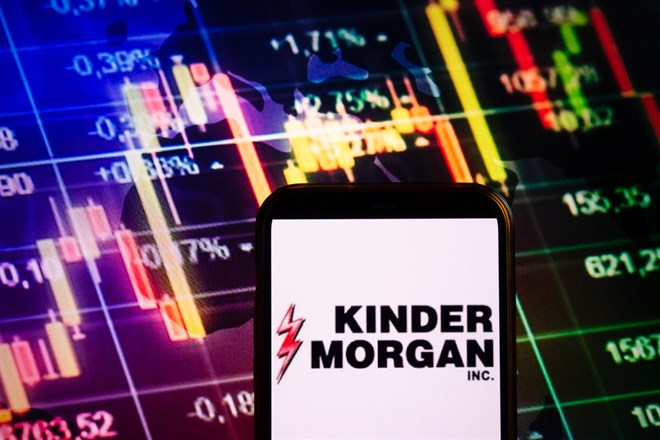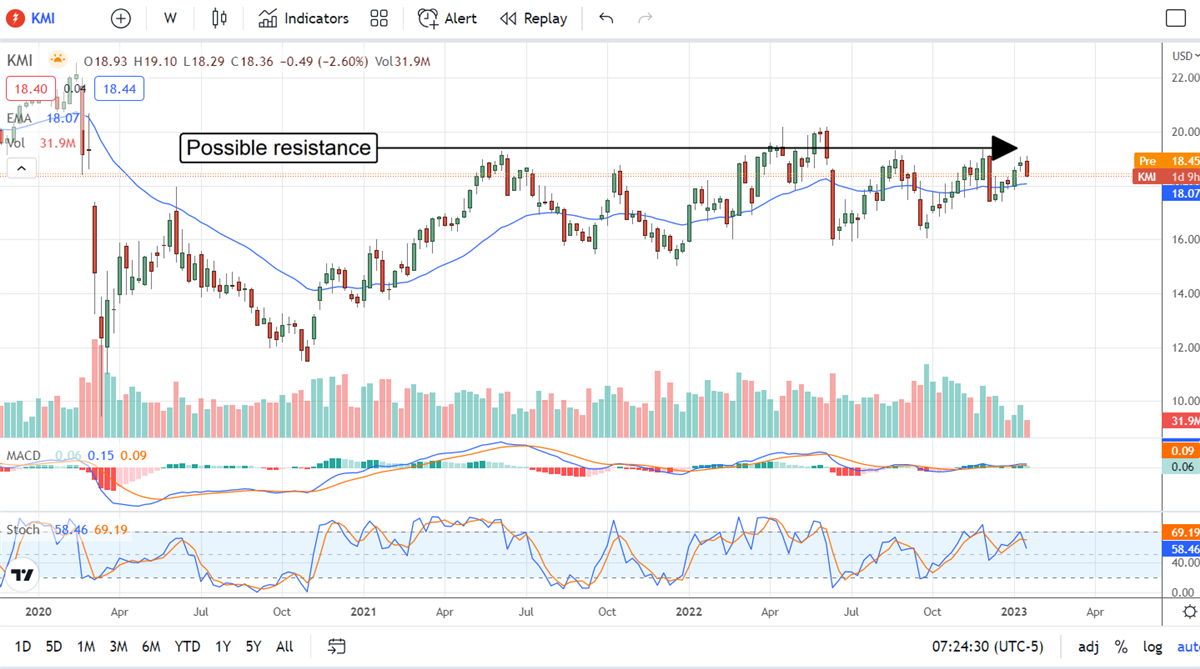
The energy sector has recently experienced some volatility but Kinder Morgan (NYSE: KMI) is still a buy. While energy producers, including natural gas producers, have seen the price for their products correct sharply from the post-pandemic highs demand for natural gas remains high.
This situation has Kinder Morgan in the catbird seat when it comes to cash flow and dividends, and that is good news for income investors.
Trading at 16X its earnings is not so much of a value compared to S&P 500 companies. When compared to the metric that really matters, distributable cash flow, that multiple recedes to a level closer to 8X and it is paying 6% in yield.
6% is more than 3X the average S&P 500 yield, it’s well above what could be considered “high yield” for the index and is a safely growing distribution to boot. What more could an income investor want?
“Our company closed out the year with another strong quarter,” said Executive Chairman Richard D. Kinder. “We generated robust earnings and strong coverage of this quarter’s dividend. Company shareholders continue to benefit from our capital-efficient business model that delivers on our time-tested goals: maintain a strong investment-grade balance sheet, internally fund expansion opportunities, pay an attractive and growing dividend, and further reward our shareholders by repurchasing our shares on an opportunistic basis.”
Three (3) Reasons To Buy Kinder Morgan Now
1) Kinder Morgan Beat Earnings Estimates - Kinder Morgan reported a mixed quarter for fiscal Q4 but, as always, the important news is in the details and not the headlines. The company reported $4.58 billion for a gain of 3.4% versus last but it missed the consensus estimate due to falling natural gas prices.
The salient point here, however, is that margins have expanded due to company efforts, the spread for natural gas and share repurchases. The company’s net income increased by 5.1%, the distributable cash flow by 11.3% and adjusted earnings by 16% which are all outpacing the top-line growth and above the consensus estimates.
That is good news from the earnings perspective and has this company set up for a double tailwind should natural gas prices begin to rebound.
2) Kinder Morgan Guides Strongly (enough) - Kinder Morgan reiterated its guidance for earnings and distributable cash flow despite the top-line weakness seen in Q4. The company is expecting to generate $1.12 in adjusted EPS which is in line with the consensus and to pay $1.13 in dividends.
The dividend projection is a 2% increase versus the 2021 period, and these estimates may be light. The company is expecting demand for natural gas double in “the coming years,” which is a powerful tailwind for revenue, income and distributable cash flow.
3) Kinder Morgan Increases Capital Returns - Kinder Morgan is in the business of natural gas distribution. Still, its business is delivering capital to shareholders in the form of dividends and share repurchases. The company stock is yielding more than 6.0% at the time of the Q4 release, and there is an expectation for distribution growth.
The payout ratio, at face value, is troubling because it runs near 100% but, like with the earnings multiple, when compared to the DCF, drops to about 50%. In regard to repurchases, the company upped its buyback allotment by $1 billion to $3 billion which leaves just over $2.0 billion left to be used in calendar 2023. That’s worth about 5% of the market cap and is yet another tailwind for price action.
The Technical Outlook: Kinder Morgan Could Pop At Any Time
Shares of Kinder Morgan are trading in a tight range below the pre-pandemic level despite the revenue, earnings, and dividend surpassing those same levels. In this light, shares of KMI should be trading at least at the $22 level which would be a near 25% gain for investors.
That target is slightly above the analyst's consensus, but the Marketbeat.com consensus estimate is trending higher and may move higher again now the Q4 results are out. The next major hurdle for the market is at the $19.30 level, a move above there would be bullish and could take the market up to $21 or higher.

